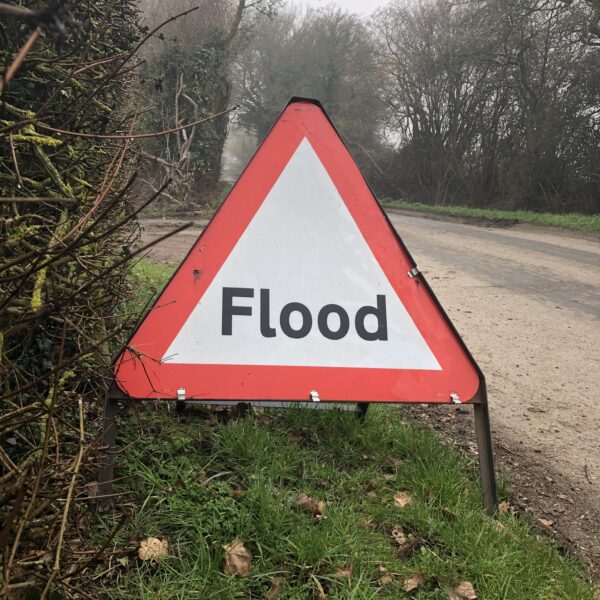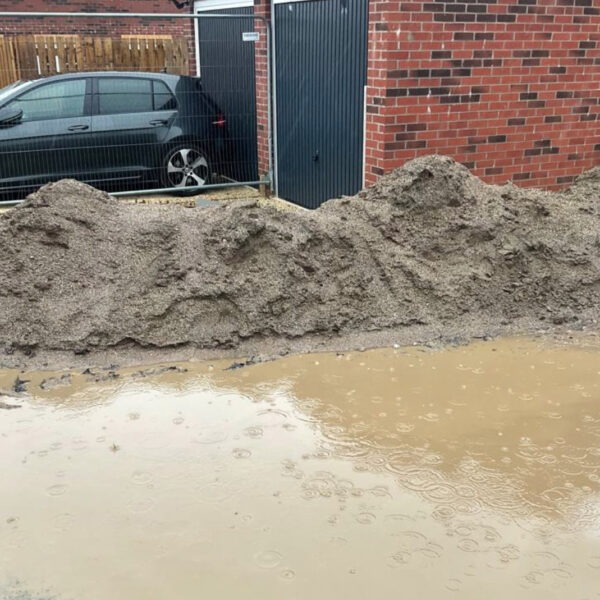Is the development in a recognised flood risk area?
It is important to find out whether the Environment Agency has already identified that there is flood risk in the area where the development is proposed. This is because it makes doing something about the flood risk a lot easier if that risk is already recognised, and the Environment Agency can be a lot of help such a case. To check, look on the Environment Agency flood maps: http://watermaps.environment-agency.gov.uk.
The development isn’t in a recognised flood risk area. What can I do now?
f the development isn’t in a recognised flood risk area, then it will not automatically require a flood risk assessment. However, national planning policy requires that any development should not increase the risk of flooding elsewhere (there is more about this in section 4).
Ask the Environment Agency ‘Sustainable Places Team’ for your area if they are aware of the proposal. If they think there may be problems, tell them your concerns and see what their response is. Also ask the planners in your local authority what they are doing to satisfy themselves that the development doesn’t increase flood risk (ask how they are sure that it won’t).
Has the local planning authority already received a planning application?
If they have, the application will have a reference number. If you don’t have this, search the planning section of the local authority website. If you still can’t find it, telephone the planning department (the number will be on the website). If there is a planning application, go to section 4.
If the developers have not yet put in a planning application, speak to a planner in the planning department and ask them whether they are aware of the proposed development, and what they are going to get the developer to do to manage the flood risk (most of the negotiation between the developer and the planners about a new development happens before a formal planning application has been submitted).
Contact your Lead Local Flood Authority (LLFA). The LLFA sits within your county or unitary council and is a statutory consultee for major planning applications (applications for ten or more properties). Many LLFAs make comments on smaller planning applications too, and will be willing to talk to the local planning authority if there are reasons why a proposed development may be at risk flooding or may increase flood risk elsewhere.
Also talk to your local councillor, as the council’s Planning Committee (composed of elected members of the council) will decide whether to approve or reject the planning application, based on recommendations from the planning officers. However, the committee may go against officer recommendations if they feel strongly about it. Elected councillors can bring pressure on both the developer and the planners in their local authority to address flooding issues at this pre-application stage.
Contact your Lead Local Flood Authority (LLFA). The LLFA sits within your county or unitary council and is a statutory consultee for major planning applications (applications for ten or more properties). Many LLFAs make comments on smaller planning applications too, and will be willing to talk to the local planning authority if there are reasons why a proposed development may be at risk flooding or may increase flood risk elsewhere.
Also talk to your local councillor, as the council’s Planning Committee (composed of elected members of the council) will decide whether to approve or reject the planning application, based on recommendations from the planning officers. However, the committee may go against officer recommendations if they feel strongly about it. Elected councillors can bring pressure on both the developer and the planners in their local authority to address flooding issues at this pre-application stage.
Why is the type of flooding important?
The National Planning Policy Framework (NPPF) says the following (paragraph 103):
“When determining planning applications, local planning authorities should ensure flood risk is not increased elsewhere, and only consider development appropriate in areas at risk of flooding where, informed by a site-specific flood risk assessment following the Sequential Test, and if required the Exception Test, it can be demonstrated that:
Within the site, the most vulnerable development is located in areas of lowest flood risk unless there are overriding reasons to prefer a different location; and
Development is appropriately flood resilient and resistant, including safe access and escape routes where required, and that any residual risk can be safely managed, including by emergency planning; and it gives priority to the use of sustainable drainage systems.”
Due to the way the NPPF is worded, the sequential and exception tests only apply in practice to river and sea flooding. However, the requirement to ensure flood risk is not increased elsewhere (and only consider development appropriate in areas at risk of flooding where, informed by a site-specific flood risk assessment, the conditions in the two bullets in paragraph 103 are met) applies to all forms of flooding.
Despite this, many local planning authorities ignore the risk of surface water flooding when approving proposals for new development, and in practice the Environment Agency only routinely advises on planning applications for river and sea flooding. Because its resources have been severely cut, the Environment Agency has advised planning authorities to only consult it on applications for ‘major development’ (over 10 houses; and/or a site of 1 hectare or more; and/or a building with a floor space of 1000 square metres or more) in areas at risk of river and sea flooding.
However, if you think there is a risk of flooding, remind the local planning authority of its responsibilities under paragraph 103 of the NPPF: this applies to all forms of flood risk, and that planning applications for development in flood risk areas (which includes areas at risk from surface water flooding) must be accompanied by a flood risk assessment (NPPF footnote 20 to paragraph 103).
As well as lobbying the local planning authority, you can suggest ways to improve the development and make it safer and more sustainable yourself. Developers will listen to the views of local residents if they think it might affect their chances of getting planning permission. There are lots of things a developer can do to manage flood risk and build something that is sustainable and safe. Have a look at chapter 5 of the planning advice note on integrated water management: http://www.ciwem.org/planningadvice
and also the information on sustainable drainage on the Susdrain website: http://www.susdrain.org/delivering-suds/
Developers often don’t want to do these sensible things, as they have to think a little harder about designing the development, but the planners can require them to do it.
Sewer flooding is a special case: although it is explicitly included in the definition of flood risk in the NPPF, in practice local planning authorities and the Environment Agency rely on the water and sewerage companies to manage this risk, and generally don’t consider it when assessing planning applications. This is because water and sewerage companies have a statutory duty to provide adequate sewerage for new development and ensure the whole area is adequately drained (Water Industry Act 1991). However, the last thing a water company wants is having its reputation (and share price) tarnished by sewer flooding, and having to pay compensation to those affected. Ask the water company if they know about the proposed development (they may not, as the local planning authority isn’t obliged to consult them), and ask them if they can provide assurance that their sewer system will be able to cope.
How do I object to a planning application?
Once a planning application has been submitted, there will be a period for objections to be submitted. You can make your objections online on the council website. Read the planning application: does it acknowledge the flood risk? Is there a flood risk assessment?
If there isn’t a flood risk assessment, ask why!
If there is a flood risk assessment and the Environment Agency has objected, or has reservations, then support the Environment Agency. If there is a flood risk assessment, but it doesn’t address all the issues, then set out the matters not covered and ask the planners in the local planning authority to challenge the developer to address the outstanding items.
As well as submitting objections to the planning application online, set out your concerns in a letter to the person in charge of the planning department at the local planning authority, copied to your local councillor. Talk to your local councillor: they can influence the planning committee decision, even if they are not on the committee themselves. Also talk to the local press: journalists are always looking for good local interest stories. Local petitioning and media attention at this stage can have a big influence on planning committee decisions.
Remember when you are objecting to a planning application that the planners can only take into account valid planning reasons, known as ‘material planning considerations’. Flood risk is a material planning consideration, as are a number of other issues (usually listed on the council’s website). However, things like the effect on property values, or your views on the applicant, do not come under this heading.
You can get a lot of useful information and help on the internet. As a start, try: Objecting to planning applications: legal aspects
Copyright 2023, Mary Long-Dhonau



